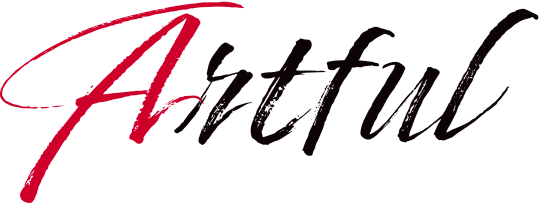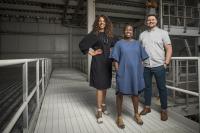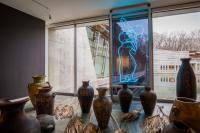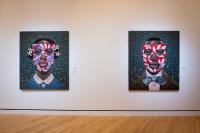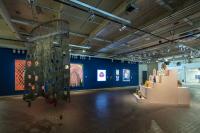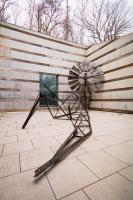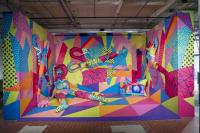Among the many long-anticipated art events to be eclipsed by the pandemic was the debut, in late February, of the Momentary, a new branch of the Crystal Bridges Museum of American Art in Bentonville, Arkansas. A renovated former cheese factory intended to showcase the museum's contemporary art program and including artist studios and performance spaces, the Momentary opened with "State of the Art 2020," a culturally and geographically diverse sequel to 2014-15's ambitious national survey "State of the Art: Discovering Art Now." Just three weeks later, the entire museum complex had to shut down along with gathering places of all kinds.
Last week, on June 10, the state of Arkansas allowed Crystal Bridges and the Momentary to reopen—with, of course, a long list of precautions. Visitors with timed tickets can now explore the new building and "State of the Art 2020," but the show's organizers—Crystal Bridges contemporary art curator Lauren Haynes, along with associate curators of contemporary art Alejo Benedetti and Allison Glenn—have had to rethink some of the live programs and interactive elements. Haynes, who organized acclaimed shows of Alma Thomas and Stanley Whitney in her prior role at the Studio Museum in Harlem, spoke to Artful's Editorial Director about re-introducing the Momentary and her exhibition to a changed world.
Karen Rosenberg: The Momentary and your exhibition "State of the Art" had been open for about three weeks before all of Crystal Bridges went into a temporary shutdown. I can imagine how much planning must have gone into the new building and the exhibition, and how frustrating it must have been to suddenly have to close them. What was that like for you?
Lauren Haynes: It's a bit surreal, right? We worked so hard for such a long time to get the building open, and then we had a great opening, great first few weekends with so many people coming through. And then we closed, and it was like, "Did we actually open? Did that really happen?" But it gave us a moment to really think about digital programs—how do we make the exhibitions come alive?
KR: "State of the Art" is supposed to reflect the worldview of artists over the past couple of years. But so much has happened in the past couple of months: The pandemic and its economic fallout, the protests concerning police brutality and structural racism. What, if any, adjustments have you made to the show or the programming around it to reflect what's going on right now?
LH: The big adjustments that we've made in this show was that works with interactive components have been limited. In terms of content we haven't shifted anything because the show is about the work when it was made, and we wanted to make sure that we're not changing a narrative that I think that's still important and valid. Yes, June 2020 is very different even from February 2020, but it's important to let people bring those experiences to the work. And maybe it changes how people think about the work or interact with it, but we're also trying not to guide those conversations in a way that might feel a little bit too quick and reactive.
The programming, though, has shifted. We were always planning to do a summit around the exhibition, like the first "State of the Art," but instead we're shifting it to a virtual summit that will take place in September. A virtual summit allows you to work with people who maybe wouldn't have been able to travel, so that opens up the list. It's all about asking, how do you take these challenges and find those moments where you can lean into it and try something a little different?
KR: I understand not wanting to be too reactive, as curators. But looking at it from the viewer's perspective, are there works that you think really stand out in this new reality?
LH: Honestly, the works all still stand out. The COVID pandemic is something that is new, but the systematic violence, all these things that more people are talking about, have always been in existence. I think the artists are asking us to pay attention to things that maybe not everyone is forced to pay attention to. So I think that the works have always been timely and reflective of the moment we're in. It's just that now, more people are paying attention to the reality that faces a lot of people in our country.
KR: What about the specific themes you used to organize the exhibition—"world-building," "sense of place," "mapping," and "temporality"? How did you hit on those concepts, and how might they be interpreted today versus four months ago?
LH: We were careful not to go into the research stage, the studio visits, with themes in mind. We wanted to make sure that we were being responsive to what we were seeing and hearing from artists, and these were the themes that kept rising to the top. But the idea of "sense of place" is something that probably resonates in this moment, when everyone has been frozen at home or in one particular place. What does it mean to think about this idea of place now? These are artists who are based in specific communities, or they're bringing a sense of where they come from to where they live now. How is that exacerbated in this moment where we're all thinking hyperlocally?
KR: Museums all over the country right now are exploring how to function as sites of activism, or exploring what relationship they have to activism. If the Whitney Biennial happened to be on right now, for instance, I think we would definitely see it become one of these sites. Do you see Crystal Bridges and The Momentary playing such a role, and more generally how do you think museums should participate in these conversations?
LH: We provide opportunities for people to come and see artworks and have facilitated conversations, but we want all those things to lead viewers to have other, sometimes more difficult conversations at home with their family and friends.
As part of an institution working with living artists and contemporary artists, artists to whom activism is central to their work and practices, I think institutions have to start listening in a different way. Everyone sort of listens and says, "we should think about this, we should do this," but it seems like we're in a moment now where more institutions are actually going to put real change forward. And I don't think it can just be one person saying, "This is what we need to do." It needs to be an institution-wide decision and mandate, and something that is done over time. There's not one quick answer or solution. At Crystal Bridges and the Momentary, we are working closely across our staff, our board, everyone that has to be involved in these types of decisions to make real change happen.
KR: Certain very popular features of the Crystal Bridges collection, such as the Yayoi Kusama Infinity Mirrored Room, are off-limits right now. How are you thinking about exhibition space now with the reality of social distancing?
LH: Both Crystal Bridges and the Momentary are doing timed ticketing, so we can control the amount of people in the building. But the hands-on activities in the galleries, or in the art-making spaces in the building—those are things that we're not doing right now. We are thinking about how to give people prompts that will still allow them to look and think deeply about the artworks—maybe the hands-on art-making happens when they get home. We're lucky here to have such beautiful outdoor spaces surrounding us, so we can push people to see the sculpture on the grounds of Crystal Bridges or spend time outdoors at the Momentary and have that be an equally important part of the art-going experience.
KR: What about the financial repercussions of the crisis?
We were lucky enough to not have to lay off or furlough any staff during this moment. Any other changes that we have to make are secondary in my mind. We keep hearing, the further we get into this, that more institutions have to consider it. It's still very much a shifting, day-to-day situation that we're in right now.
KR: How are you thinking about the longer term? Many museums are talking about pivoting to focus more on local audiences and on working with their collections instead of loan exhibitions.
LH: These are things that we have done before. Crystal Bridges is only about ten years old, and a lot of what we did when we opened focused on the collection. Our collection is always up and always free, and we only have one temporary exhibition gallery. And because we are an American art museum, most of our loans are national. But yes, I think those are some of the larger questions. With the Momentary, we're still creating it and understanding who our visitors are. I think it will be a continued learning experience for us.
KR: What about the future of "State of the Art"? With so much uncertainty, how are you thinking about and planning for the next edition of the show?
LH: I think the question is, what format does it take? Rod Bigelow, the director of Crystal Bridges, has talked about having a consistent look at art being made across the United States. But it doesn't always have to be an in-person exhibition, right? So what does that look like? What does that mean? There will be a "State of the Art" in 2025, but who knows what it will look like.
A slideshow of images from "State of the Art 2020," on view at both the Momentary and the main Crystal Bridges museum building, is below.

